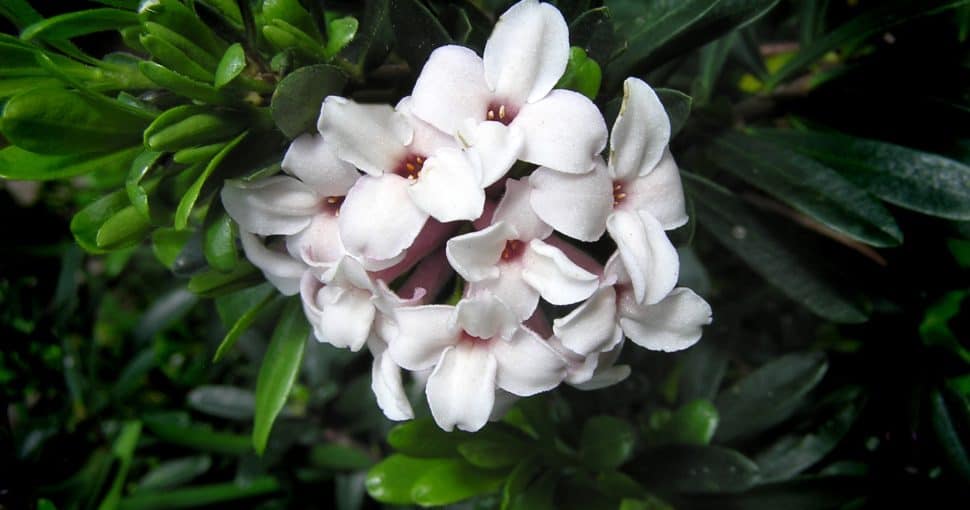Kansas has a versatile range of beautiful flora that is worth admiring and planting. However, it also has its fair share of poisonous plants hiding amongst their beautiful, non-toxic contemporaries. Read on to discover some common poisonous plants in Kansas.
Contents
- 1. English Ivy (Hedera helix)
- 2. Croton Plant (Croton)
- 3. Dumb Canes (Dieffenbachia)
- 4. Laceleaf/Flamingo Flower (Anthurium)
- 5. Hortensia (Hydrangea)
- 6. Mother-In Law-Tongue/Snake Plant (Dracaena trifasciata)
- 7. Honeysuckle (Lonicera)
- 8. Philodendron (Philodendron)
- 9. Poison Hemlock (Conium maculatum)
- 10. Rhubarb (Rheum rhabarbarum)
- 11. Larkspur (Delphinium)
- 12. Wolf’s Bane/Monkshood (Aconitum)
- 13. Autumn Crocus (Colchicum autumnale)
- 14. Lily of the Valley (Convallaria majalis)
- 15. Irises (Iris)
- 16. Foxgloves (Digitalis)
- 17. Bleeding Heart (Lamprocapnos spectabilis)
- 18. Hyacinth (Hyacinthus)
- 19. Oleander (Nerium oleander)
- 20. Poinsettia (Euphorbia pulcherrima)
- 21. Daphne (Daphne)
- 22. Azaleas (Rhododendron)
- 23. Yellow Jessamine (Gelsemium sempervirens)
- 24. Mayapples (Podophyllum peltatum)
Kansas is a US state blessed with a diverse landscape that grows all types of plants, weeds, vines, shrubs, and trees. While most of these plants are safe to grow and can also grow fruits that are eaten by humans and flowers that are pretty to look at and act as food for insects and birds, some unsuspecting ones can be quite poisonous to humans, animals, and birds.
Coming into contact with most of these plants can result in skin dermatitis, and ingesting them is harmless. However, others cause dermatitis and other internal symptoms that can be quite painful. Learning about these plants can help you keep yourself, your loved ones, and your pets away from danger. It will also help you handle them with care and the necessary precaution if you ever find them growing in your garden or around your home.
So, without ado, let’s explore 25 poisonous plants in Kansas that you should stay away from:
1. English Ivy (Hedera helix)
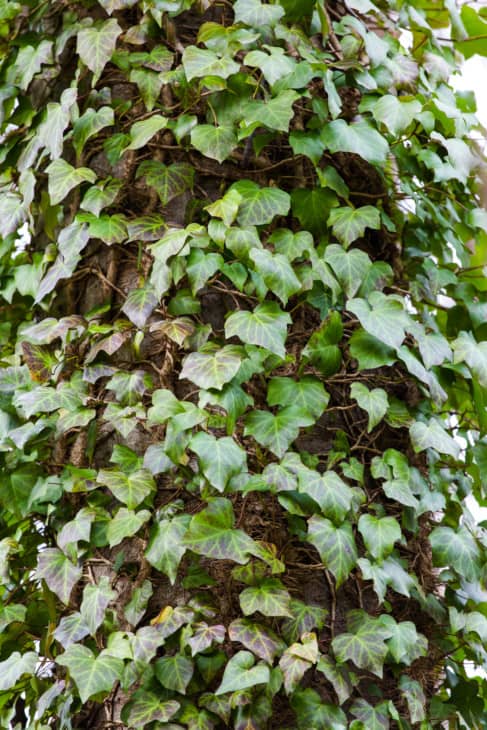
English Ivy, also named Sweetheart Ivy, is an evergreen vine that grows freely in distributed and urban forests. It features a round green bark and bears gold or green, inconspicuous blossoms. The blooms give way to significant masses or berry-like, blue-black drupes. This high-climbing vine has variegated, white, or green, simple, ovate, alternate, glossy foliage. All parts of an English Ivy are poisonous. Skin contact can cause dermatitis, while ingestion can result in stupor, delirium, burning in the throat, fever, convulsions, and other painful symptoms.
2. Croton Plant (Croton)
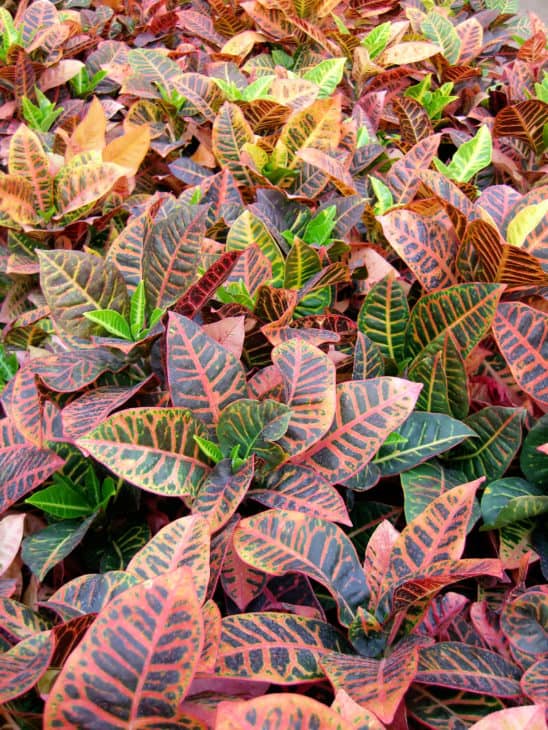
Croton is native to Malaysia and the Pacific. It’s been extensively cultivated and is now grown as a houseplant. Croton sap is considered to be a skin irritant. This plant features evergreen, glossy, leathery, brilliantly colored, lance-like or oval-shaped leaves. The foliage can be yellow, green, pink, white, orange, red, purple, crimson, or a delectable combination of all. Crotons are toxic to humans and animals.
3. Dumb Canes (Dieffenbachia)
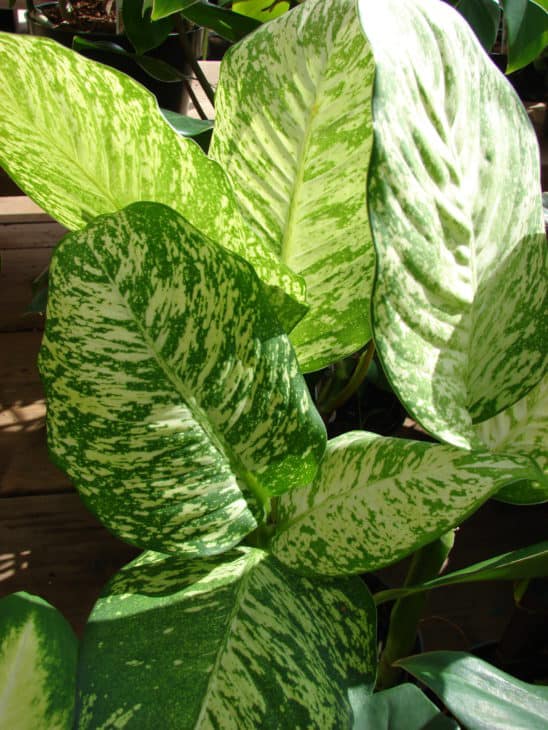
Dumb Canes are poisonous plants with variegated foliage that contains yellow and cream markings. These plants feature green stems covered with large, oblong leaves with outer edge bands. They also grow minuscule green blooms and berry-like fruits. Dumb Canes contain an acrid sap that can cause numbness of the throat and vocal cords, extreme drooling, and vomiting. Contact with the sap can also result in skin irritation. The sap can also damage your cornea.
4. Laceleaf/Flamingo Flower (Anthurium)
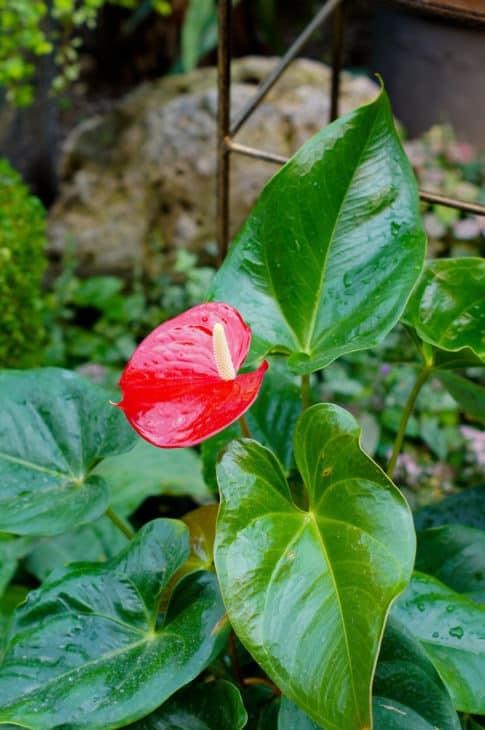
Flamingo Flower is a genus of around 825 herbaceous plants native to tropical America. These plants are largely cultivated for their long-lasting floral arrangements. They can grow as epiphytes or terrestrial plants. The flowers consist of central, rod-type spadix that bear multiple, minuscule, bisexual blooms. The leaves are variably shaped and somewhat leathery. These plants are toxic, and if ingested, they can cause blisters and swelling to develop in your mouth.
5. Hortensia (Hydrangea)
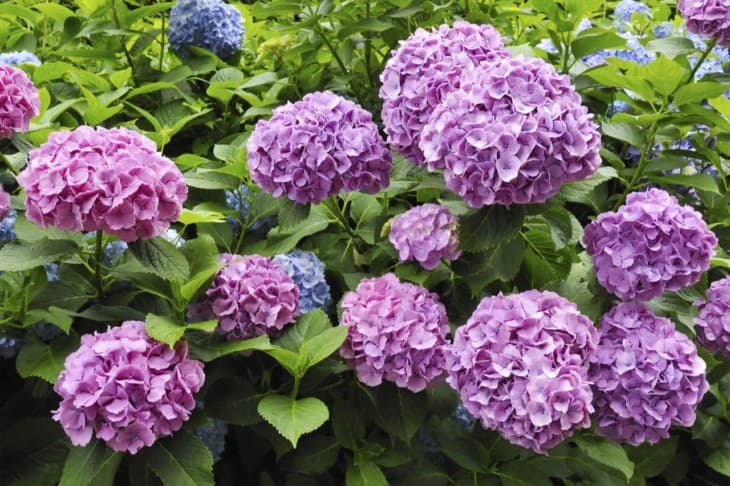
Hortensia is a popular, quickly-growing flora that is poisonous to humans and livestock. Also named Hortensya or Hortensia, this herbaceous plant bears attractive masses of brightly-hued blooms that can be frosty white, pink, clear blue, red, or lavender-colored. All parts of Hortensia contain cyanogenic glycoside and are poisonous. Accidental ingestion can cause diarrhea, vomiting, and nausea. Touching the plant will cause dermatitis.
6. Mother-In Law-Tongue/Snake Plant (Dracaena trifasciata)
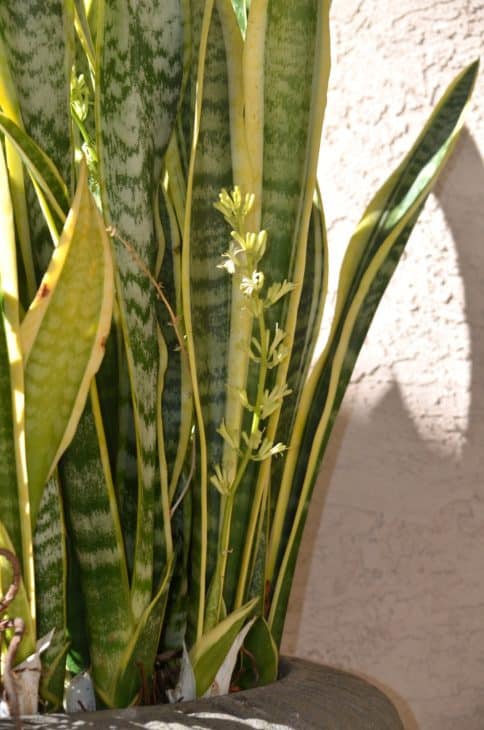
Mother-in-Law-Tongue is a broadleaf, erect houseplant. This durable, clumping, evergreen plant is known to improve indoor air quality. It grows upright, stiff, variable-colored leaves that are simple, leathery, and fleshy. The foliage creates clusters. Snake Plant rarely blossoms, but when it does, it features white or green minuscule, non-scented blooms. It contains poisonous saponins, and ingesting it can cause nausea, vomiting, diarrhea, extreme salivation, and depression.
7. Honeysuckle (Lonicera)
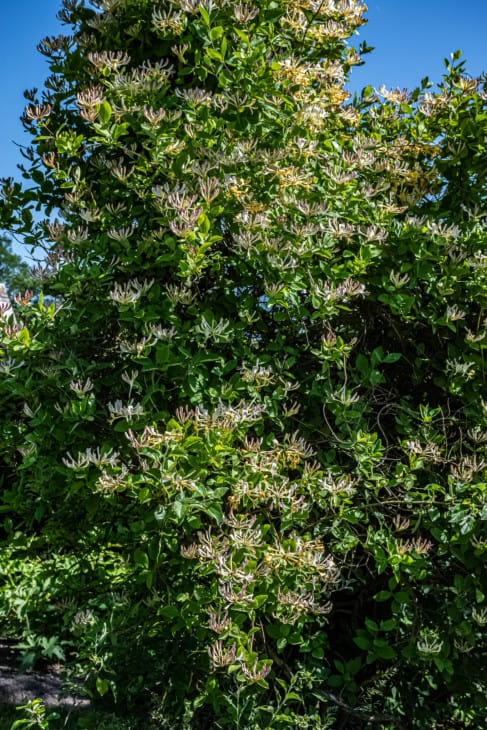
Honeysuckle is a genus of around 180 species of climbers and ornamental shrubs native to temperate zones of both Hemispheres. Cultivated for their flowers, Honeysuckles are deciduous or evergreen plants with simple, opposite leaves that grow distinctive scales in winter. Most of them have fragrant, tubular blooms with sweet nectar. The blossoms give way to red, black, or orange berries. Depending on the species, the berries can be mildly toxic. They can cause sweating, diarrhea, vomiting, pupil dilation, and increased heartbeat.
8. Philodendron (Philodendron)
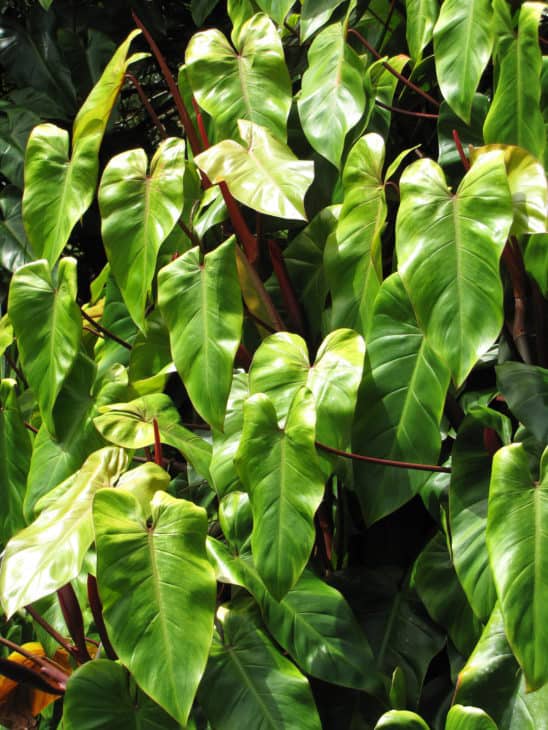
Philodendron is a genus of around 450 species of trailing tropical flora native to America. These are herbaceous plants with stout stems. All Philodendrons are poisonous plants. Accidental ingestion can cause burning and swelling of the tongue, lips, and throat, vomiting, and diarrhea. Many of these plants begin their journey as vines but later develop into epiphytes. They have long petioles and unisex blooms in yellow, red, and white hues. They also bear red-orange fruits.
9. Poison Hemlock (Conium maculatum)
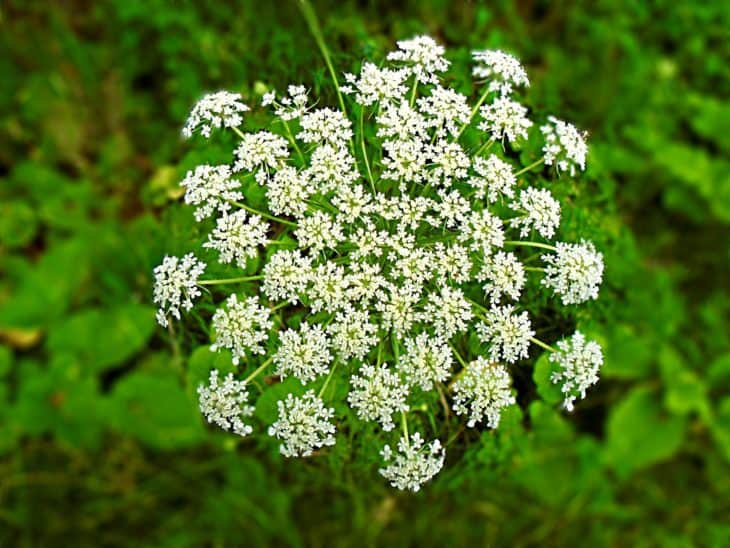
Poison Hemlock is a toxic biennial that originated in North Africa and Europe. It is an aggressively-growing plant that has naturalized throughout the globe. You can find it growing alongside roads, vacant lots, streams, and rivers. This herbaceous weed contains coniine and toxic alkaloids. Ingesting it can result in paralysis, dizziness, dilated pupils, and death. Poison Hemlock bears umbrella-like masses of white-hued, tiny blooms, and bright green-fern-type foliage. It also has distinct stems with purple-red spots and streaks.
10. Rhubarb (Rheum rhabarbarum)
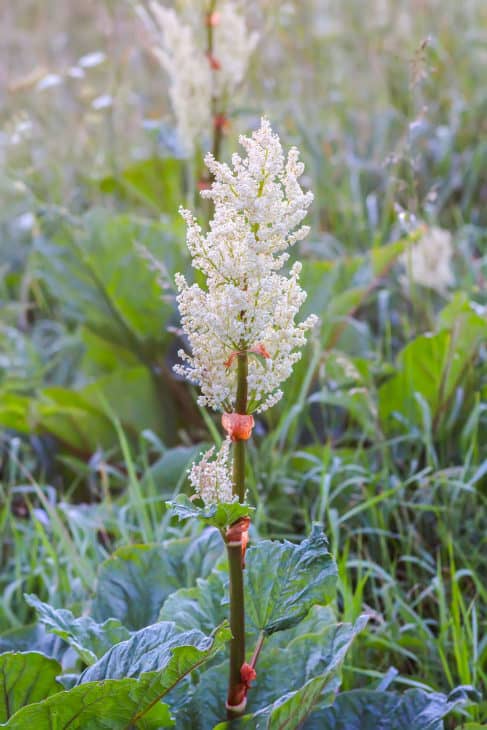
Native to Asia, Rhubarb is an herbaceous ornamental plant with poisonous leaves and roots. Ingesting them can cause abdominal cramps, nausea, weakness, vomiting, headaches, coma, and kidney failure. This perennial plant grows dense, terminal, elongated clusters of small, green, or white blooms and red/burgundy, 3-winged, angular fruits. It features green, large, heart-shaped leaves with red, fleshy petioles that can be eaten when cooked.
11. Larkspur (Delphinium)
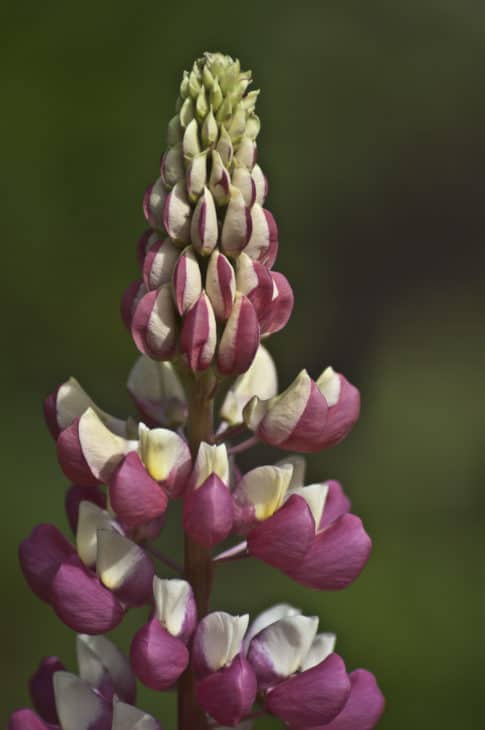
Larkspur is a genus of 300 or so perennial and annual flora. These flowering plants originated in various parts of the Northern Hemisphere and the high mountains of tropical Africa. They typically thrive in deep, moist, rich soils. Larkspur flora is usually divided into three groups based on their geography and height. The common aspects of all Larkspur plants are their eye-catching blue blossoms and deeply teethed foliage. All parts of Larkspur are toxic, and ingesting them can result in extreme salivation, weakness, nausea, bloating, pulmonary congestion, and muscle twitching.
12. Wolf’s Bane/Monkshood (Aconitum)
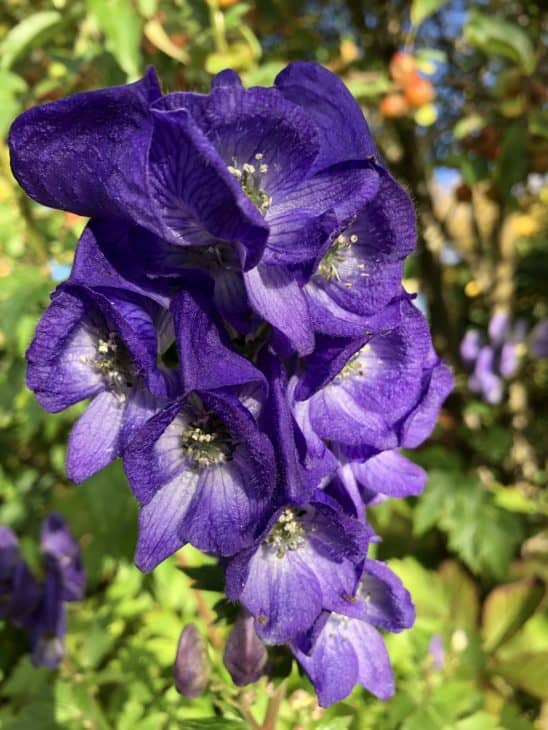
Wolf’s Bane is a genus of over 200 perennial plants. These plants are herbaceous and thrive in rick soils and partial shade in the North Temperate Zone. All Monkshood flora is extremely toxic. They have spike-like masses of hood-type blossoms and thick, tuberous roots. They also feature thickly lobed leaves. The blooms of Monkshood can be yellow, blue, purple, or white. All parts of these plants are toxic, and accidental ingestion can cause irregular heartbeat, labored breathing, stomach pains, nausea, vomiting, and a burning sensation in the mouth.
13. Autumn Crocus (Colchicum autumnale)
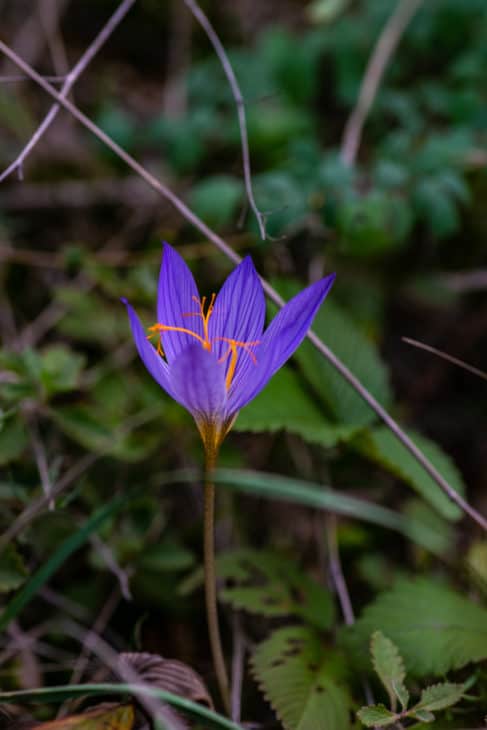
Autumn Crocus is a southern European native plant. This highly toxic perennial and herbaceous plant grows in meadows and damp woodland clearings in rich soils. It features slender, basal leaves and bears white or purple-pink, tubular autumn blooms that attract bees and butterflies. All parts of an autumn Crocus are toxic as they contain colchicine. Accidental ingestion can cause diarrhea, cramping, multi-organ damage, respiratory failure, bloody vomiting, and more.
14. Lily of the Valley (Convallaria majalis)
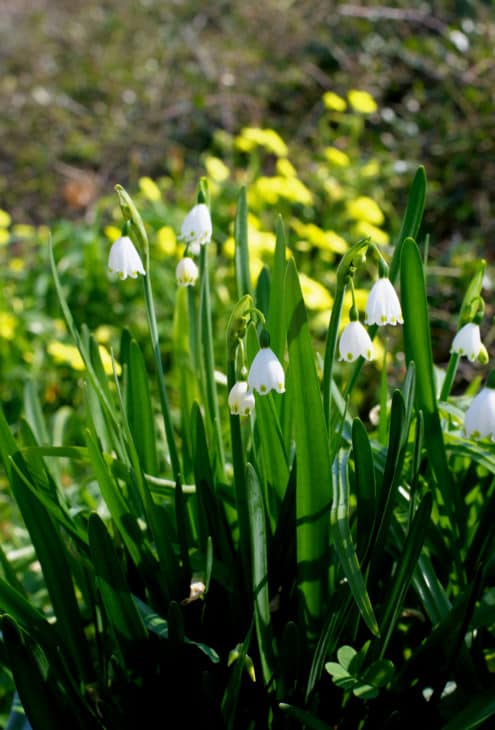
Lily of the Valley is an herbaceous perennial plant that originated in Eurasia and eastern North America. This fragrant plant is cultivated in gardens throughout temperate regions globally. Lily of the Valley grows a dense cover of glossy foliage. It features one-sided masses of nodding, white-hued, bell-like blossoms. The blooms give way to berry-type, red fruits. Lily of the Valley contains cardiac glycosides. Ingesting this plant can cause multiple types of cardiac arrhythmias and even death.
15. Irises (Iris)
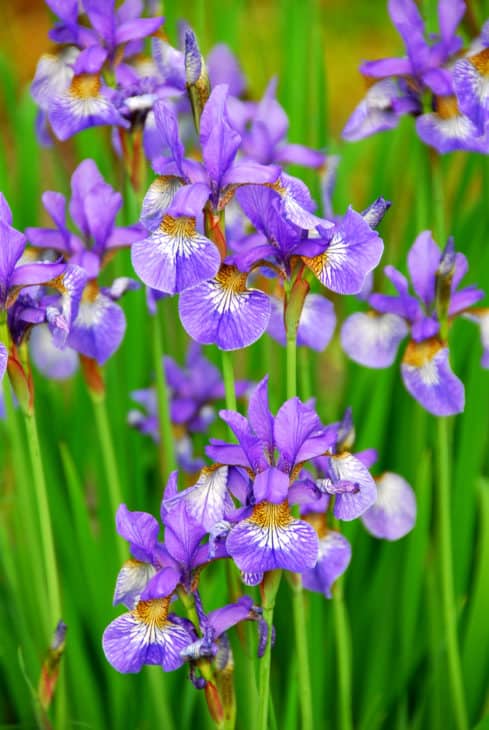
Irises are a genus of around 300 blossoming plants that grow in North Temperate Zones, the Mediterranean, and Central Asian regions. They have rhizomatous or bulbous flora with thick, creeping, underground stems. Irises can have conical, stout stems or ringed, horizontal, robust stems. The blossoms of these plants have three of each – petals, sepals, and broad, stigma branches. The bulb of Irises contains toxic compounds. Ingesting them can result in fever, vomiting, and abdominal pain.
16. Foxgloves (Digitalis)
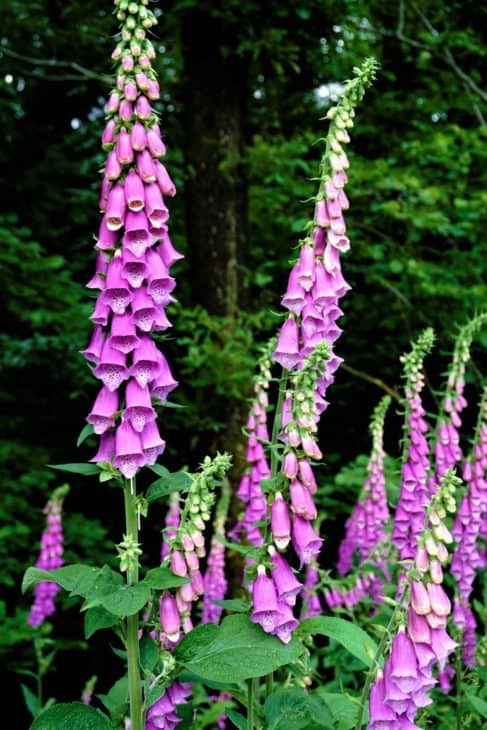
Foxglove is a genus of about 20 species of biennial, perennial plants. These herbaceous shrubs are native to Europe, the Canary Islands, and the Mediterranean. They grow alternating, ovate leaves on their lower stems. The stems are topped by elongated, on-sided masses of bell-like, pendulous blossoms that are yellow, white, or purple colored. All parts of these plants contain toxic cardiac glycosides. Ingesting them can cause nausea and diarrhea. Skin contact can cause dermatitis.
17. Bleeding Heart (Lamprocapnos spectabilis)
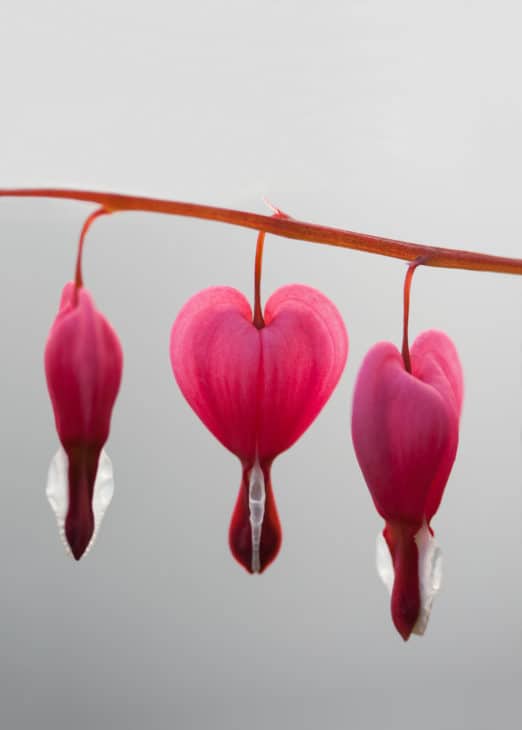
Bleeding Hearts are native to the temperate woodlands of North America and eastern Asia. All parts of these shade-garden ornamentals are considered poisonous. They feature tiny, white, or rosy-red, heart-shaped blooms that dangle from arching stems. These plants have compound leaves. When ingested, Bleeding Heart can cause vomiting, convulsions, diarrhea, staggering, trembling, and labored breathing. Skin contact with the sap can also cause irritation.
18. Hyacinth (Hyacinthus)
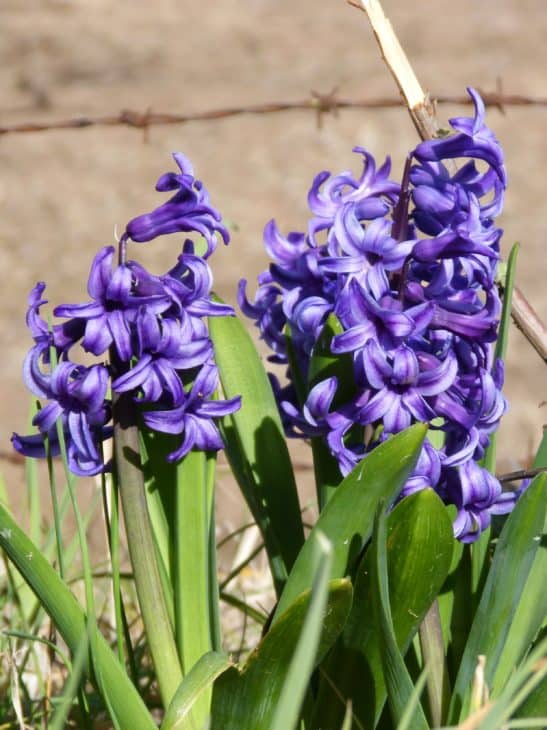
Hyacinth is a small genus of bulbous perennial that blossom in spring and bear spikes of scented blooms in mauve, pink, white, and purple. It’s a European and Asian native that has strap-shaped foliage. Hyacinth bulbs are toxic since they contain oxalic acid. Handling the bulbs without gloves can cause mild skin irritation. When accidentally ingested, Hyacinth bulbs can cause severe stomach troubles, an irregular heartbeat, and high blood pressure.
19. Oleander (Nerium oleander)
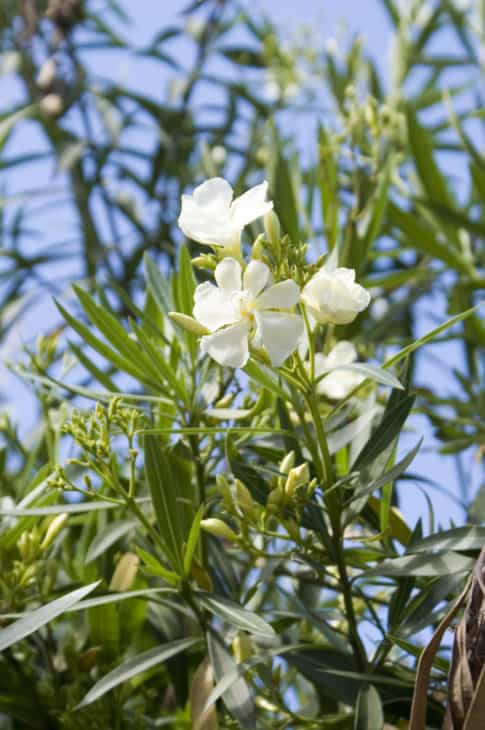
Oleander produces a toxic milky sap that contains cardiac glycosides. Accidental consumption of this evergreen plant can result in death as this toxin will slow down your heart rate. Oleander is an ornamental, blooming shrub native to the Mediterranean. This plant has thick, lance-like leaves that make up a shrub-like crown. Oleander produces masses of white, rose, and yellow-hued blooms. Coming into contact with its sap can result in skin irritation. Even eating a single leaf of this highly toxic plant can result in death.
20. Poinsettia (Euphorbia pulcherrima)
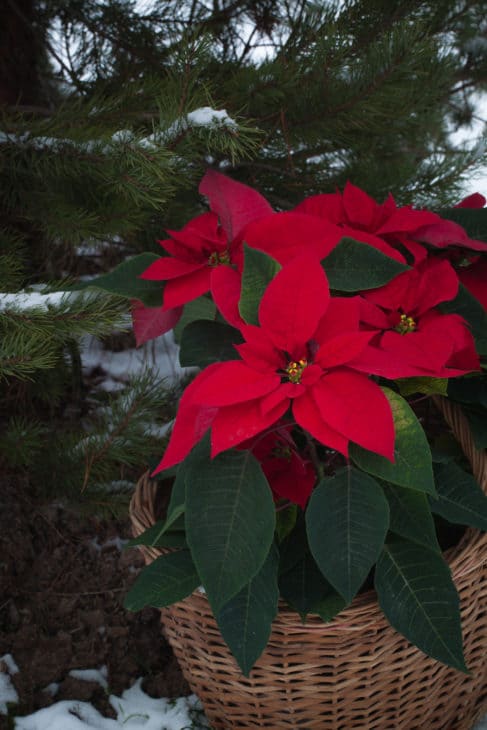
Also known as Bird-of-Paradise Flower, Poinsetta is a semi-evergreen or deciduous shrub native to Mexico. It features cup-shaped yellow blossoms that grow in clusters over showy red, pink, or cream-hued leafy bracts. The flowers have a large yellow gland on their rim. All parts of this plant are toxic, and accidental ingestion can cause vomiting, diarrhea, and abdominal pain. Skin contact can cause blisters, swelling, and redness.
21. Daphne (Daphne)
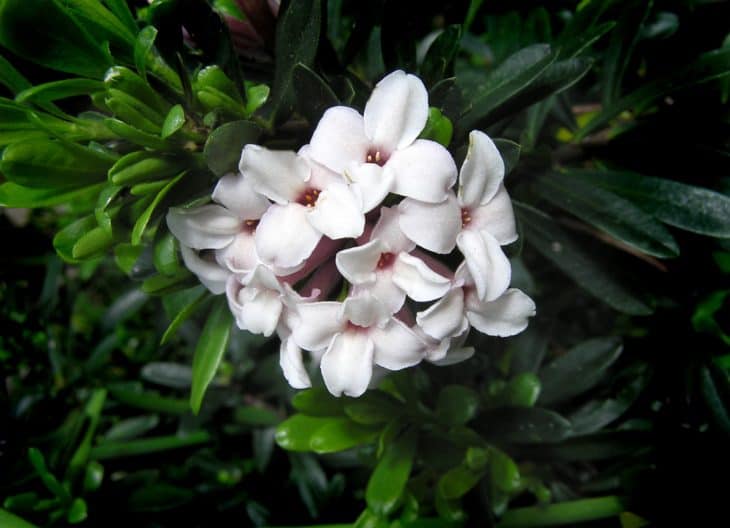
Daphne is a genus of around 50 species of flowering, deciduous shrubs native to North Africa, Europe, and Asia. These shrubs are cultivated for their scented flower clusters and bright-hued berries. The most popular Daphne species include low-growing evergreen spurge-laurel, mezereon, and garland flowers. The sap, bark, and berries of all Daphne plants are toxic to humans. When ingested, it can cause drooling, vomiting, stomach ulcers, and bloody diarrhea. The sap is also a skin irritant.
22. Azaleas (Rhododendron)
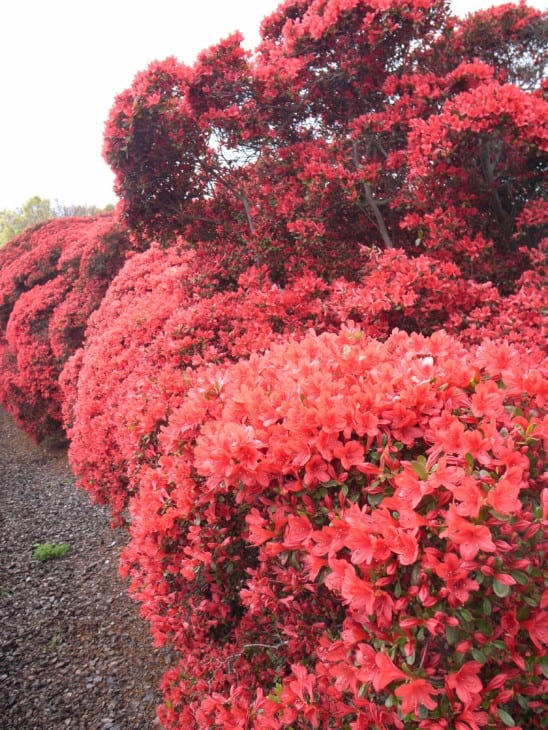
Azaleas are beautiful ornamentals native to Asia, Europe, and North America. These deciduous plants are popularly grown across the world because of their striking blossoms. Despite their popularity, Azalea bushes are poisonous as they contain toxins called grayanotoxins. Accidental consumption of this plant can cause a burning sensation in the mouth and unwanted salivation. These bushes feature distinct, fragrant, funnel-like blooms with two prominent lips and five projecting stamens.
23. Yellow Jessamine (Gelsemium sempervirens)
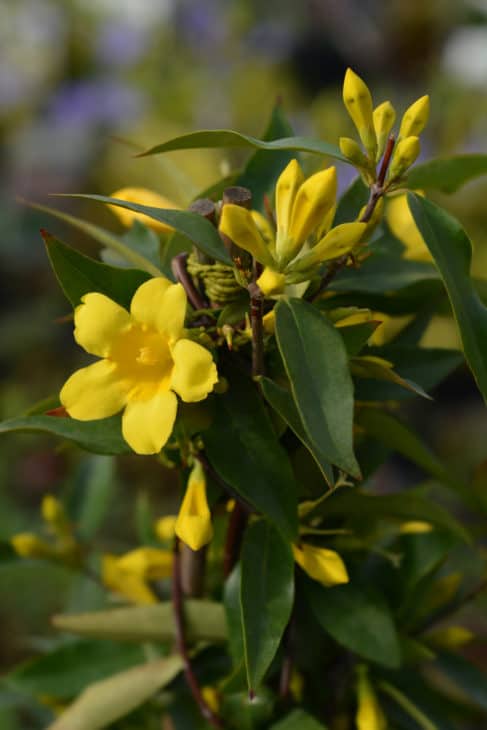
Yellow Jessamine is native to California. It’s a semi-evergreen or evergreen plant that contains gelsemium, which can cause skin irritation. This is a highly poisonous, fast-growing vine. Accidental ingestion of its parts can cause seizures, paralysis, muscle weakness, and difficulty in breathing. It climbs well on fences, walls, and trellises. Yellow Jessamine grows stunning, scented, bright yellow blossoms in late winter or early spring.
24. Mayapples (Podophyllum peltatum)
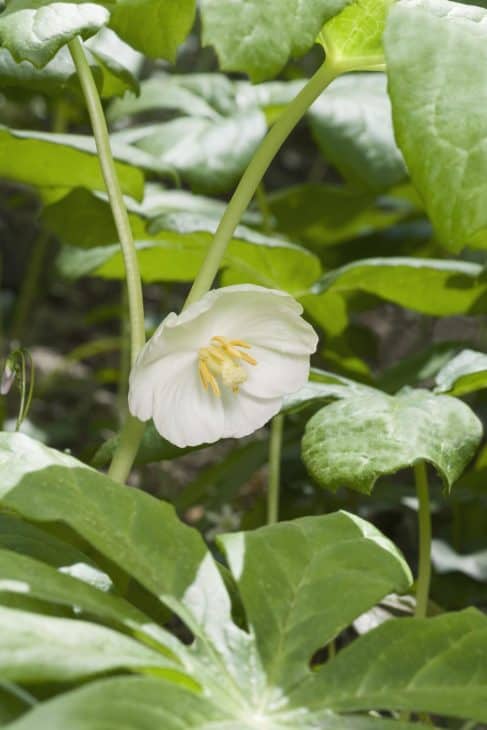
Also known as American Mandrake, Mayapple is a perennial herb that grows in rich woods, forests, pastures, and fields. This plant has umbrella-like, large, deeply loved leaves and a solitary white bloom with waxy petals and 12 to 18 stamens featuring bright yellow anthers. It also grows apple-like yellow fruit. Mayapple’s unripened fruit, rhizomes, and leaves are highly toxic. Skin contact can cause severe dermatitis, i.e., severe irritation, redness, and skin ulcers. Accidental ingestion can cause salivation, diarrhea, vomiting, fever, lethargy, headache, panting, and coma.

